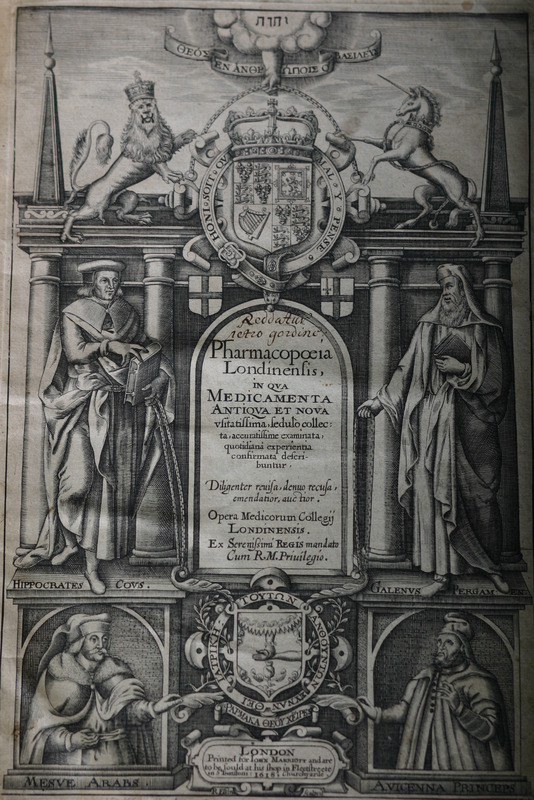Pharmacopoeia Londinensis: A mystery
Produced by the Royal College of Physicians in 1618, Pharmacopoeia Londinensis was the first authoritative, standard pharmacopoeia for the whole of England, Scotland and Ireland producing their own.
It lists all the drugs authorised for use by the physicians, from the stomach lining of hens, used as an astringent at the time, to recognisable drugs such as opium, preparations of which are still around today.
A royal proclamation of James VI Scotland / I England commanded ‘all Apothecaries of this Realme to follow the dispensatory’ compiled by the physicians, giving them control over the apothecaries, who they considered a threat. Whilst physicians were a small, elite group, who treated the wealthy and powerful, apothecaries attended to the ailments of the populace. Although not university educated, the apothecaries were professionals. They were knowledgeable in the practice of medicine, larger in number than the physicians, available to everyone and much less expensive.
With apothecaries forced to follow instructions according to Pharmacopoeia Londinensis, physicians’ power over them was maintained.
Signs and symbols
 On opening Pharmacopoeia Londinensis, (second issue, December 1618), the title page is awash with symbols of power. These include the Tetragrammaton, Hebrew for God, appearing on a cloud from which a hand reaches out to hold the coat of arms of King James.
On opening Pharmacopoeia Londinensis, (second issue, December 1618), the title page is awash with symbols of power. These include the Tetragrammaton, Hebrew for God, appearing on a cloud from which a hand reaches out to hold the coat of arms of King James.
The College of Physicians’ own coat of arms is situated alongside four important figures who influenced the development of medicine: Galen, Ibn Sina (Avicenna), Hippocrates and Mesue.
The presence of all these images is no coincidence: they emphasise the status of the College of Physicians.
As interesting as the Pharmacopoeia Londinensis is in its own right, there’s something about our volume which makes it all the more exciting.
Sir William Paddy and ‘Principis Ferdinandi’
Discovered in Brussels in 1955, our copy contains handwritten notes, perhaps contemporary to the period in which it was published. The majority of these are headed ℞ for ‘Recipe’ or prescription. Further notes in French include instructions for the dispensing of certain medicines and their uses.
The surname 'Paddeius', (first name now faded), is included in a handwritten inscription at the foot of the title page. Assuming it refers to Sir William Paddy, he was born in 1554 and was President of the College of Physicians in 1618. As a Fellow, he is likely to have had some involvement in the production of Pharmacopoeia Londinensis. He was also physician to King James I.